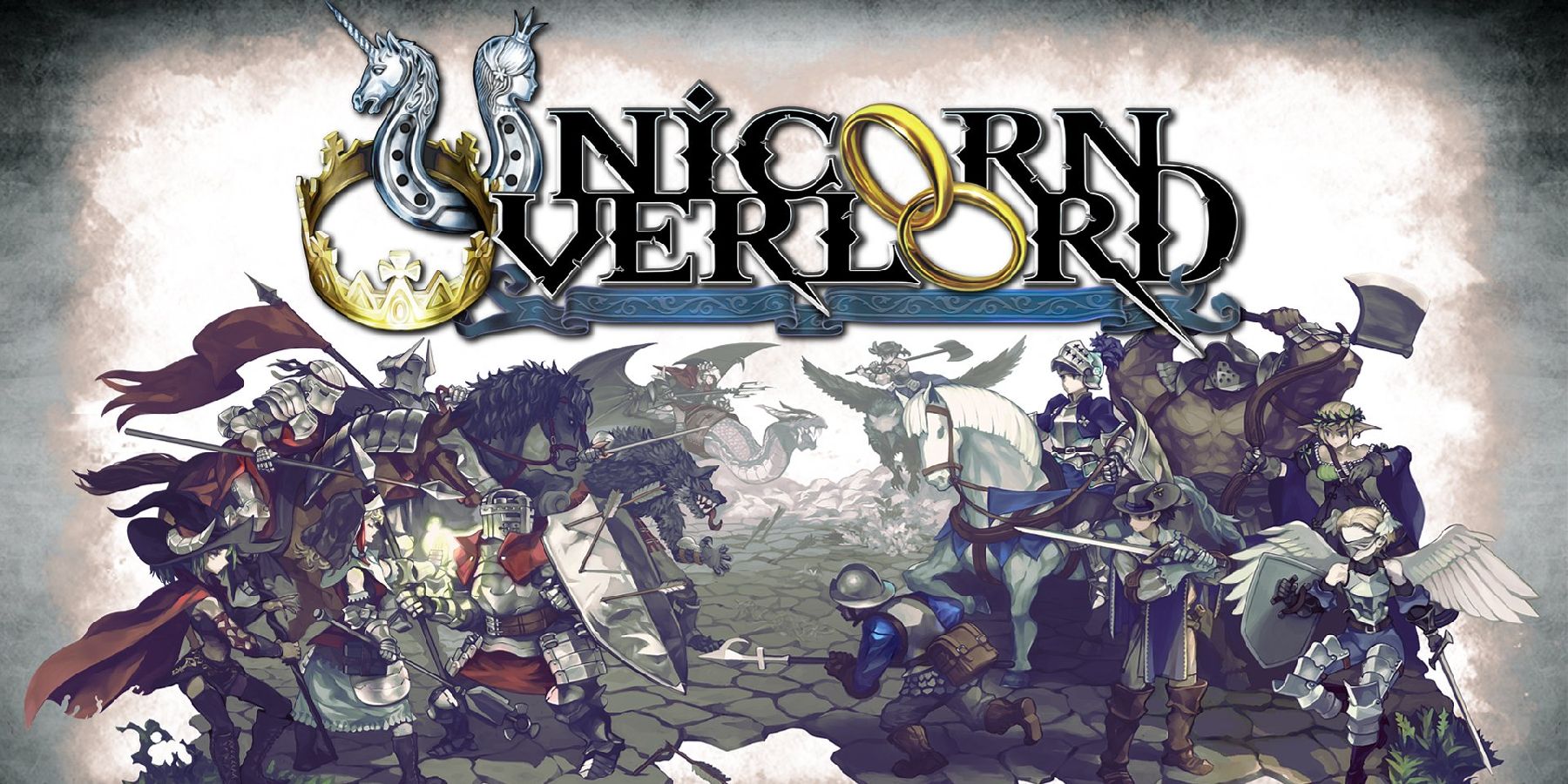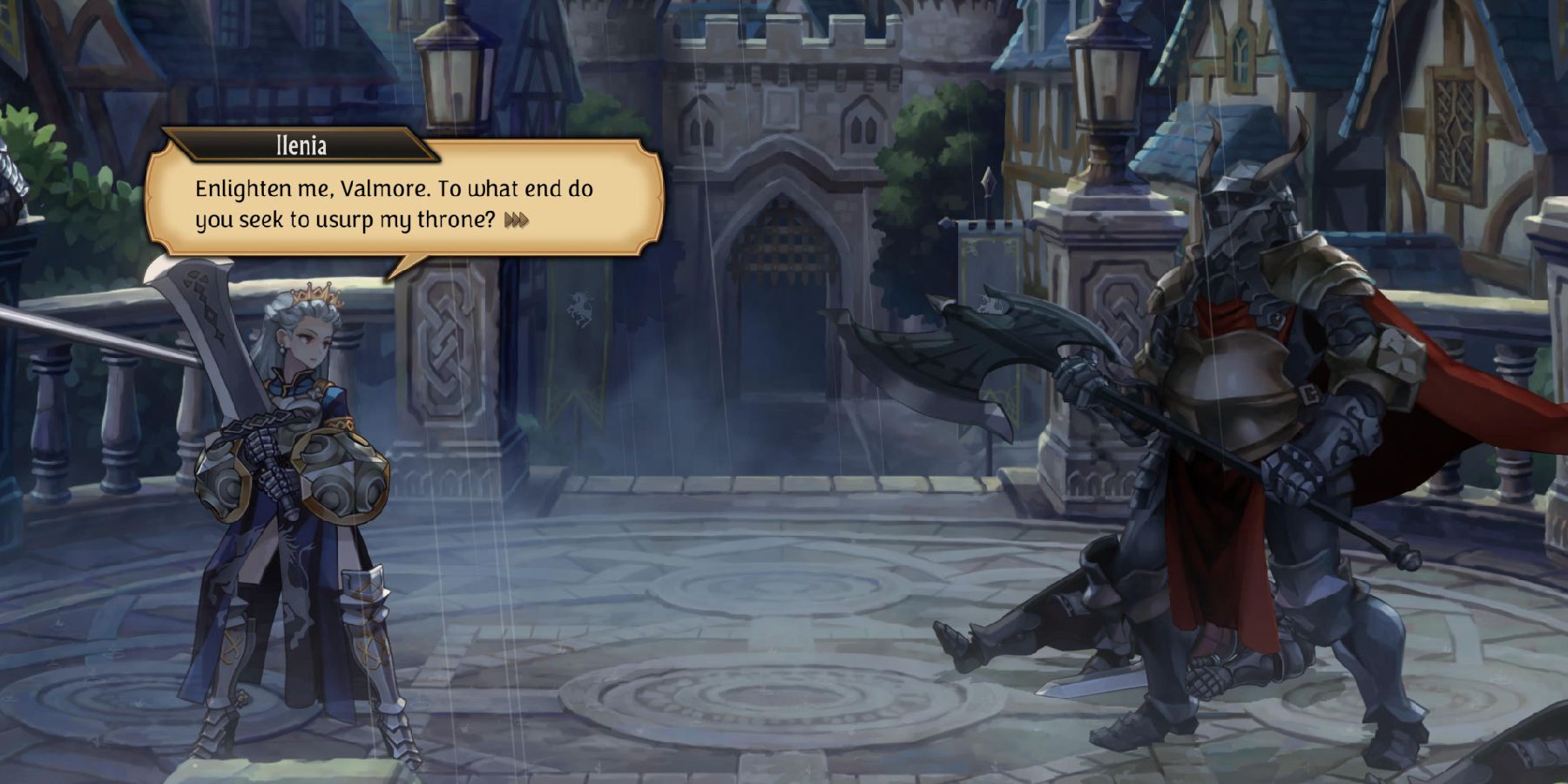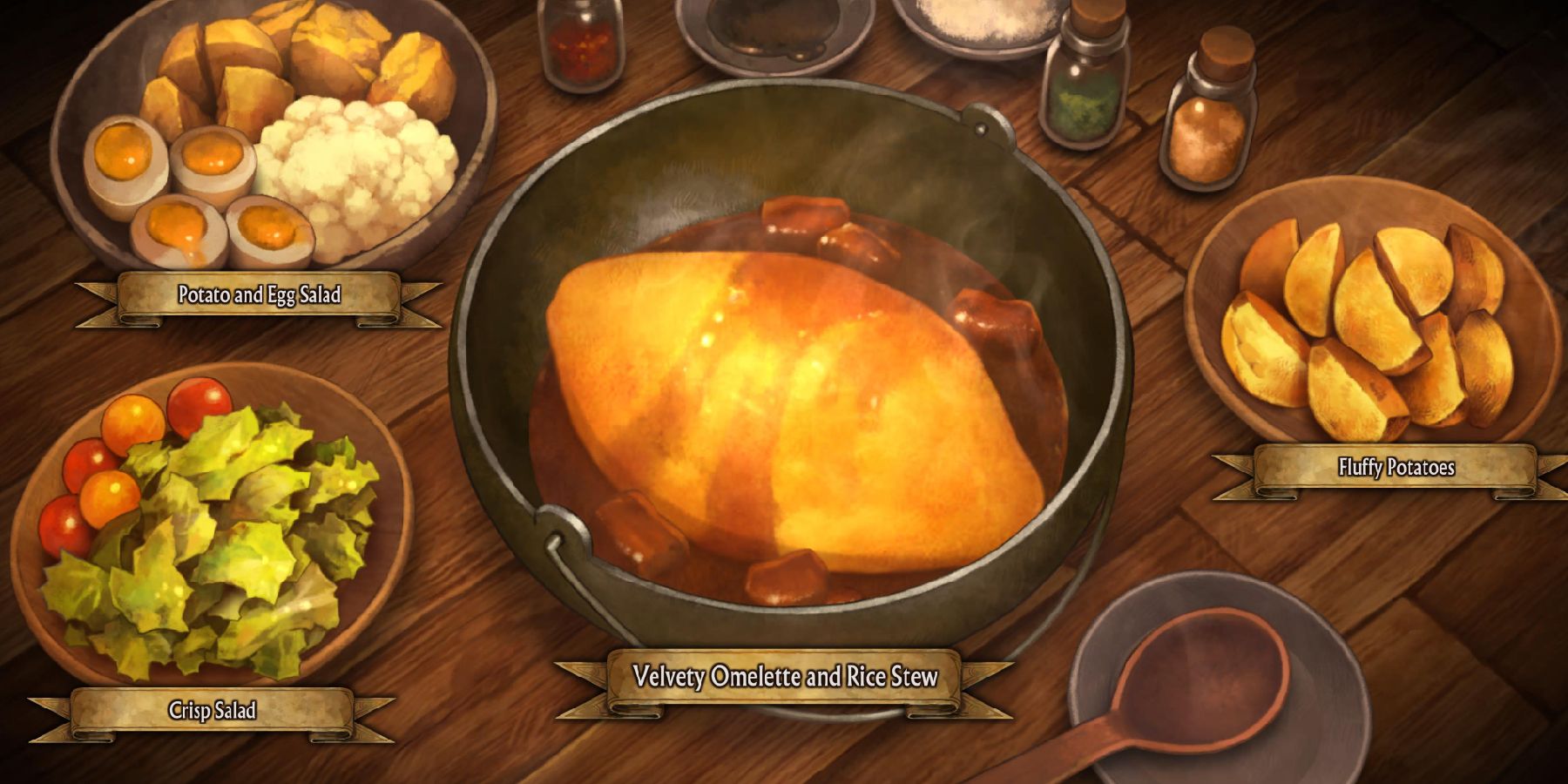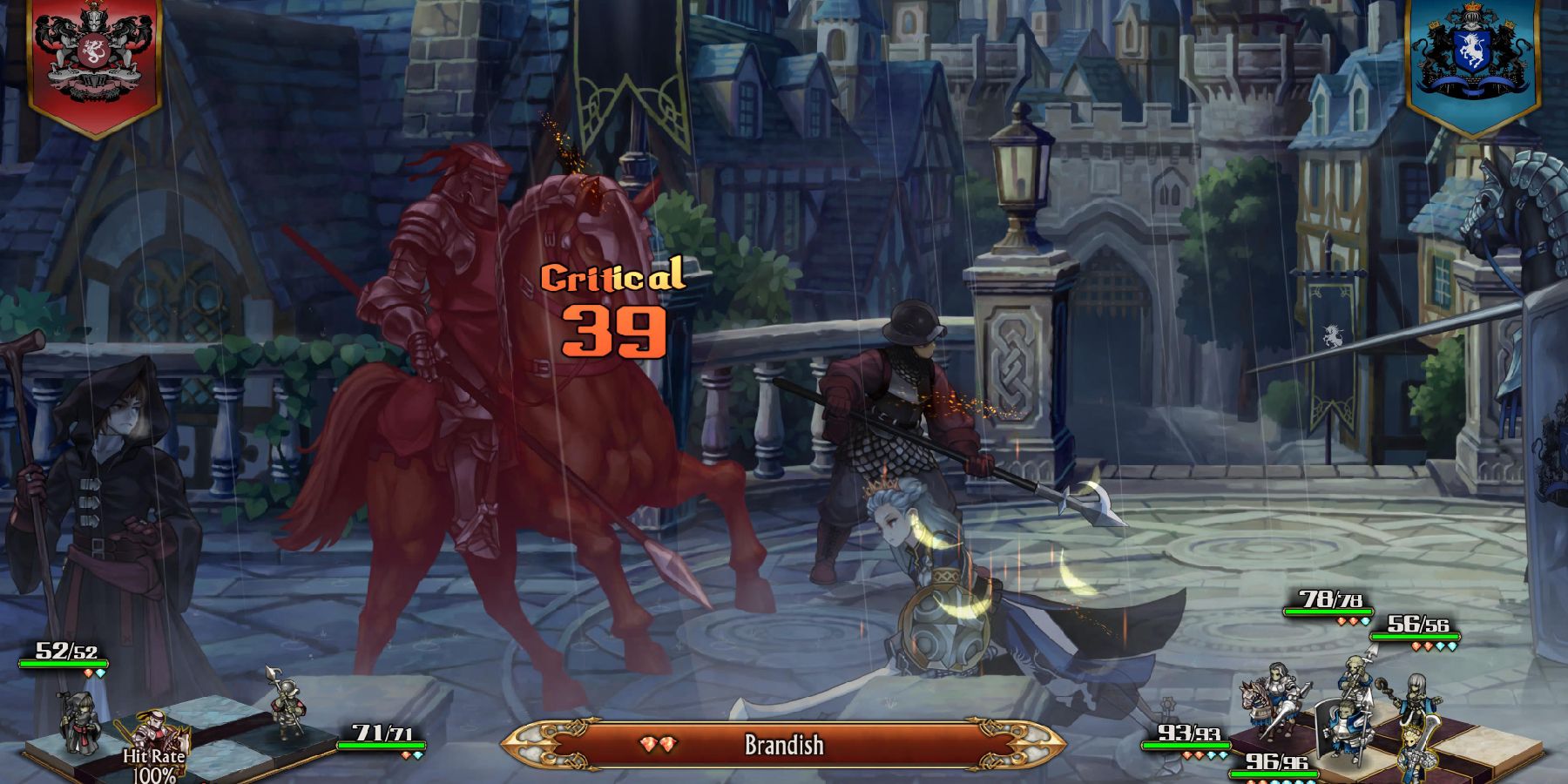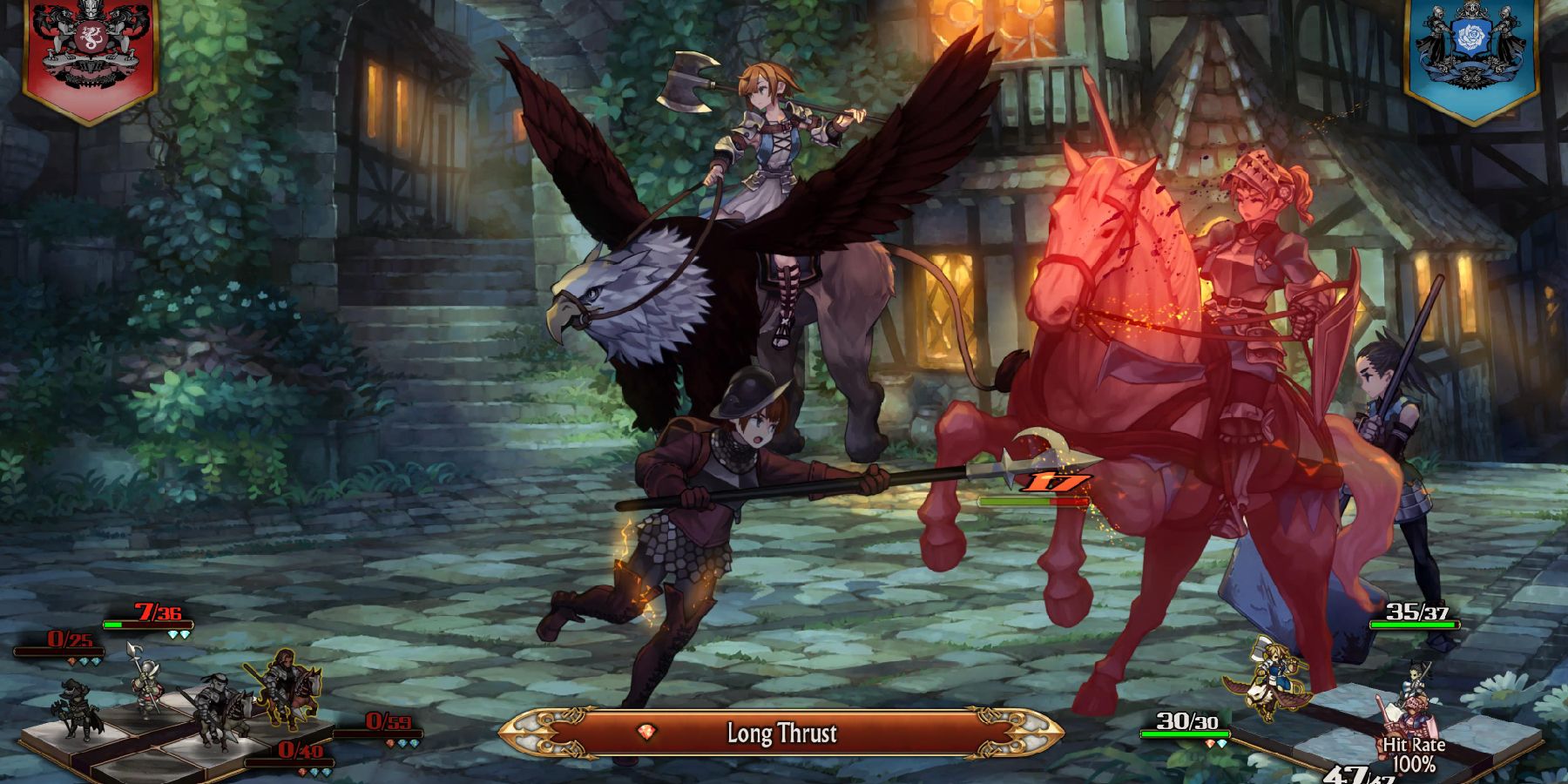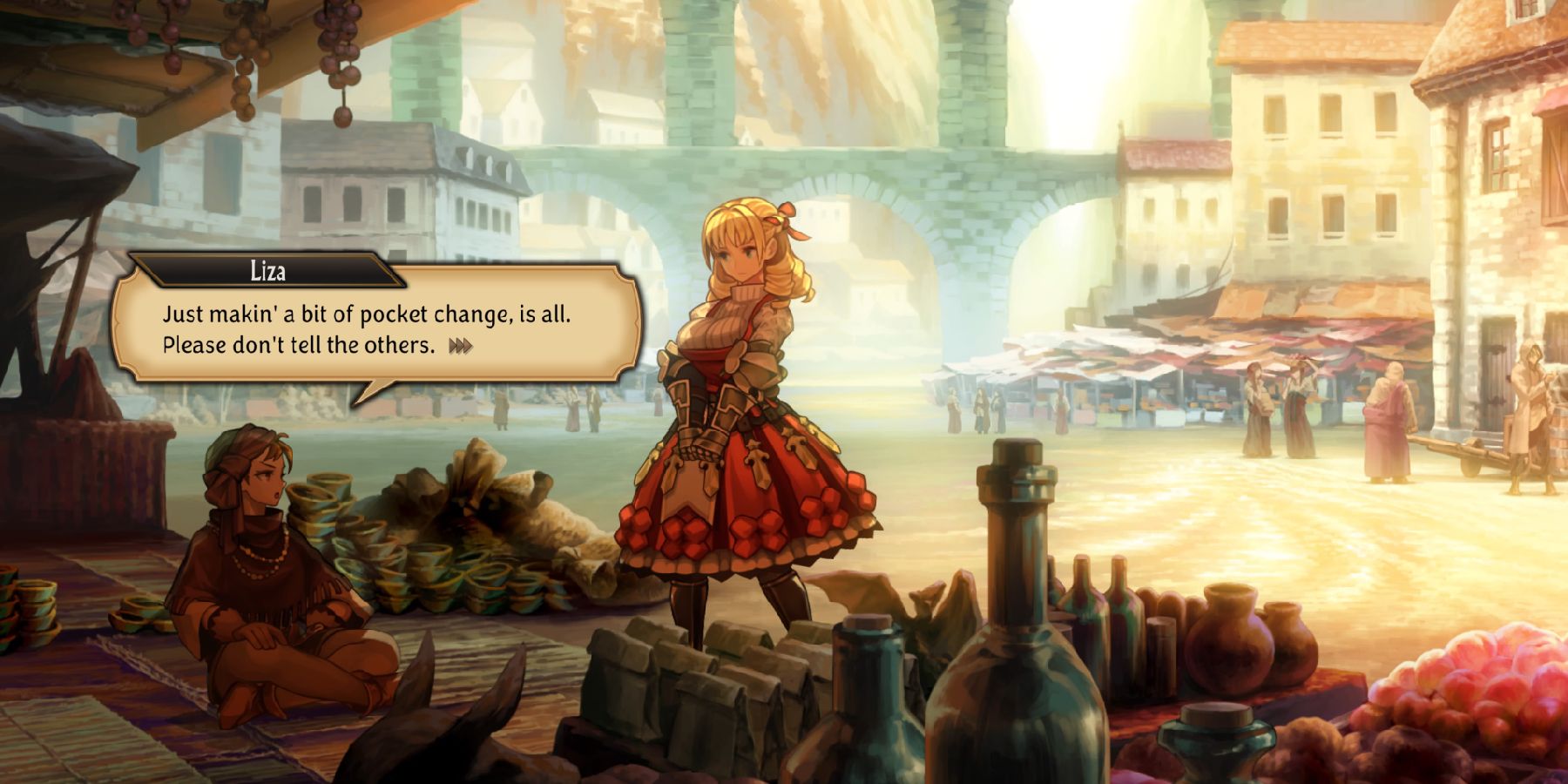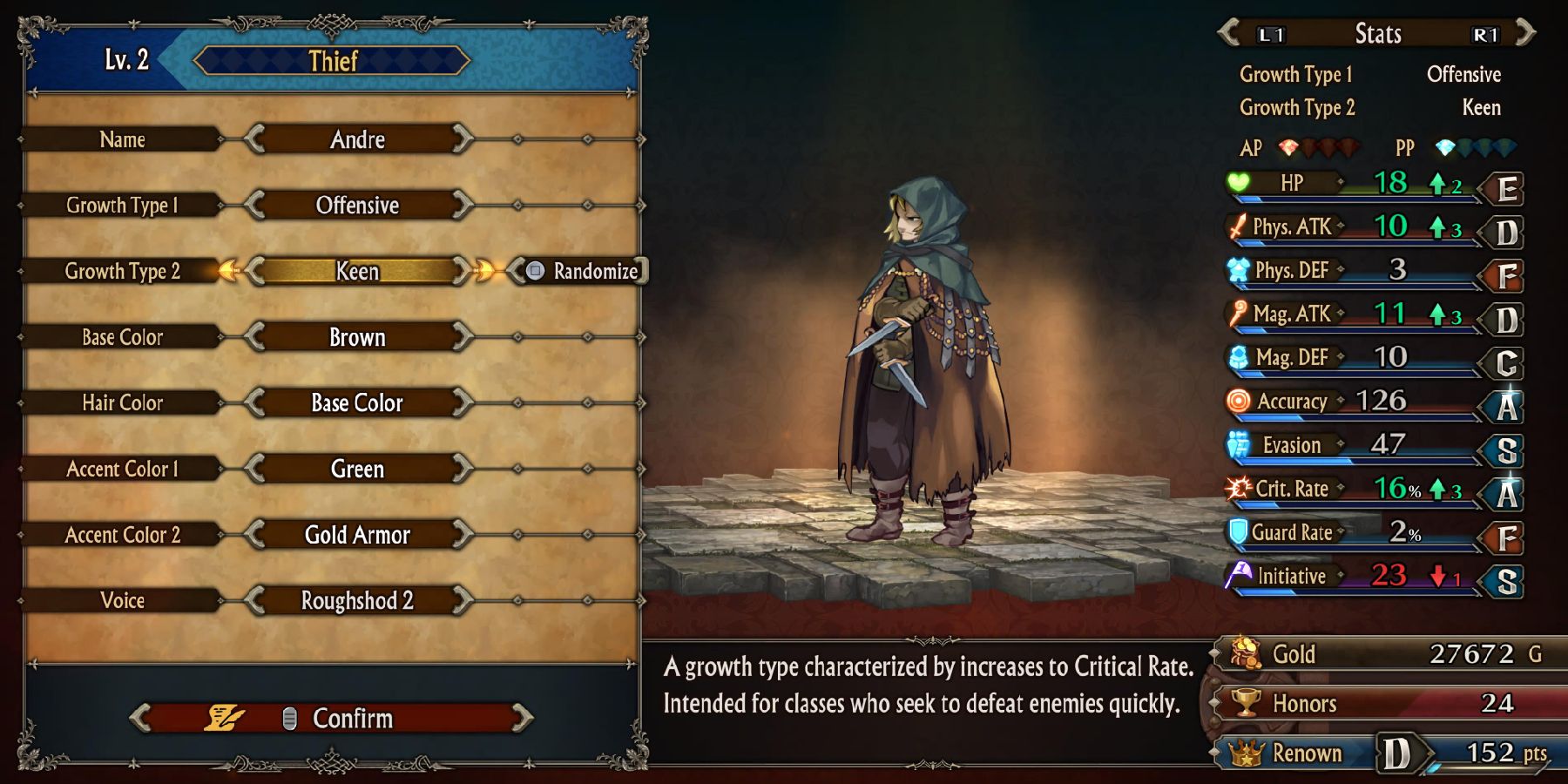With the strategy RPG resurgence in full swing, it seems like everyone is trying to scratch that late '90s itch that so many fans crave while also bringing something new to the table; luckily, Unicorn Overlord does just that. Developed by Vanillaware and published by Atlus, Unicorn Overlord is sprawling, deep, and absolutely gorgeous, with only minor problems holding it back. Its biggest issues come from a rather generic story that sidelines great characters, while minor inconveniences, like its overwhelming and tedious UI, could use some work. However, in the heat of combat, none of that matters.
Unicorn Overlord finds itself in an interesting spot, as tactics RPGs have been given new life in recent years, thanks to titles like Fire Emblem: Engage, Marvel’s Midnight Suns, Tactics Ogre: Reborn, and Advance Wars 1+2. While those are great games in their own right, the tactics genre can often be a bit obtuse and difficult to crack for those who haven't been with the genre since its flagship hits were released many years ago. Unicorn Overlord stands out as a refreshing twist on the tactics formula while also feeling like the most well-rounded and accessible addition to the genre so far. Unicorn Overlord's ten years in development may have been a long wait, but it was well worth it.
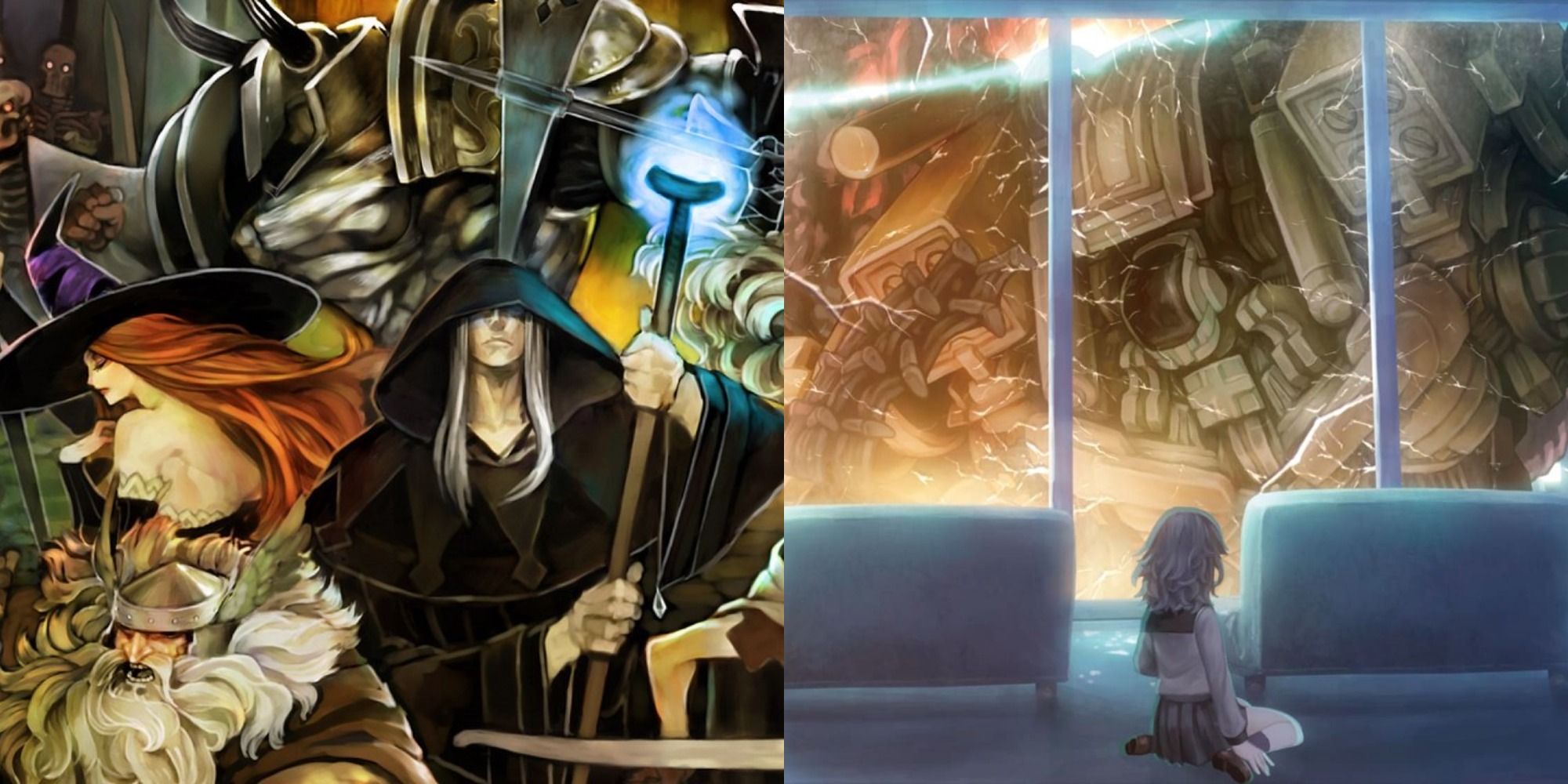
The Best Vanillaware Games, Ranked
Vanillaware has risen to popularity thanks to 13 Sentinels: Aegis Rim, but the studio also has other great games fans will enjoy.
Unicorn Overlord: A Simple Story That Shines With Its World-building
Unicorn Overlord’s story won’t be anything new to fantasy fans who have dug into the genre past Lord of the Rings, but that doesn’t mean it isn’t entertaining despite some generic story beats. The game opens with the Kingdom of Cornia falling into the hands of General Valmore, a villain who has harnessed dark magic in his pursuit of power. Valmore strikes down Cornia’s existing benevolent monarchs while Holy Knight Josef flees with the heir to the throne, Prince Alain, in hopes of one day raising him as the Lord who will return Cornia to the light.
After a ten-year time jump, Lord Alain has grown into a young man and takes his first steps into becoming a hero as Valmore’s armies reach the shores of his sanctuary, kicking off the main story. It's a simple premise that most fantasy fans will see coming from a mile away, but Unicorn Overlord makes up for it with its characters and world-building.
Throughout a roughly 45-hour campaign, Alain meets an extensive list of allies throughout Cornia and its four surrounding kingdoms, all with their own arcs about villainy and redemption. Many of Alain’s allies usually jump aboard the Liberation Army after being defeated by Alain and having Valmore’s dark magic dispelled from their minds or now seeing that Alain’s cause is right. No bad actor is irredeemable in the eyes of Unicorn Overlord. There are also plenty of opportunities for Alain to reject previously heinous villains if he deems them too villainous to join his army. But the majority of the time it’s always worth it to pick up a new friend and redeem them as the righteous hero that Alain is.
One of Unicorn Overlord’s biggest narrative struggles is managing the scope of its characters and story. With sixty recruitable characters just in the main campaign, it can be hard to feel emotionally invested in all of them. Naturally, some will fall into the reserves, given the expanse of its roster. Most of the characters from the beginning of the game, like Josef and Lex, are easy to love and stick around as the main-stays of the plot, while some of the characters that Alain encounters later on feel like one-offs in a growing slideshow of unique but underutilized characters. It often felt like Unicorn Overlord’s massive character scope outgrew its narrative foundations and could leave players wanting in some instances.
It’s in the Rapport conversations that each character gets their chance to shine, but that is a somewhat disjointed affair. Unicorn Overlord's Rapport system is how Alain and the cast grow together for combat boosts, with multiple hundreds of Rapport conversations across the whole roster. These conversations can range from being cute, charming, and distinct to feeling like tacked-on conversations just so each character has the same amount of Rapport opportunities as everyone else for balance purposes.
At the end of it all, it seemed like there were a lot of missed opportunities to let the whole cast feel complete, and that is just down to how massive the game is. In spite of these problems, however, Unicorn Overlord still lets players grow attached to otherwise insignificant units and characters with its excellent customization options, allowing them to make units they can call their own and grant a sense of agency to the world. It's a small victory in the grand scheme of things, but it's very much in the spirit of tabletop RPG miniatures that players can attach themselves to.
Unicorn Overlord's overworld is broken up into five kingdoms: Cornia, Drakenhold, Elheim, Bastorias, and Albion--each visually distinct and with its own set of interesting unlockable characters. These can range from elves to dragon riders to even bestial friends and foes. The main story does a great job of fleshing out each zone with its own distinct set of problems, such as being overrun by thieves, infected with a plague, or simply being pillaged by Valmore’s army. There is always some new problem to fix in the world, and Alain is there to help. Unicorn Overlord is always raising stakes and stories for each new zone that help ground Alain in the world and make the struggle to liberate each zone worthwhile.
The game's main loop of liberating a town, scouring the world for resources to rebuild destroyed settlements, and setting a character as the designated protector of each town is a joy for those who love to role-play as a compassionate liberating force. Additionally, Unicorn Overlord features a multitude of side quests for Alain’s new allies in each zone that help flesh out some minor characters while also building the story of each kingdom with every quest. Although it may look sparse, there is always a feeling of the world being lived in thanks to these side quests.
However, the rewards for fighting the good fight are also material. Unicorn Overlord always ensures that helping those on the ground will boost Alain's army with more resources, units, and vendors for his army, making them a key part of Alain's journey to the throne. These never felt like mandatory checklist stories, though, because being able to look back after a long campaign in each kingdom and reflect on all the territories that Alain had won was always a great feeling that only fueled the excitement of doing it all over again for the next kingdom.
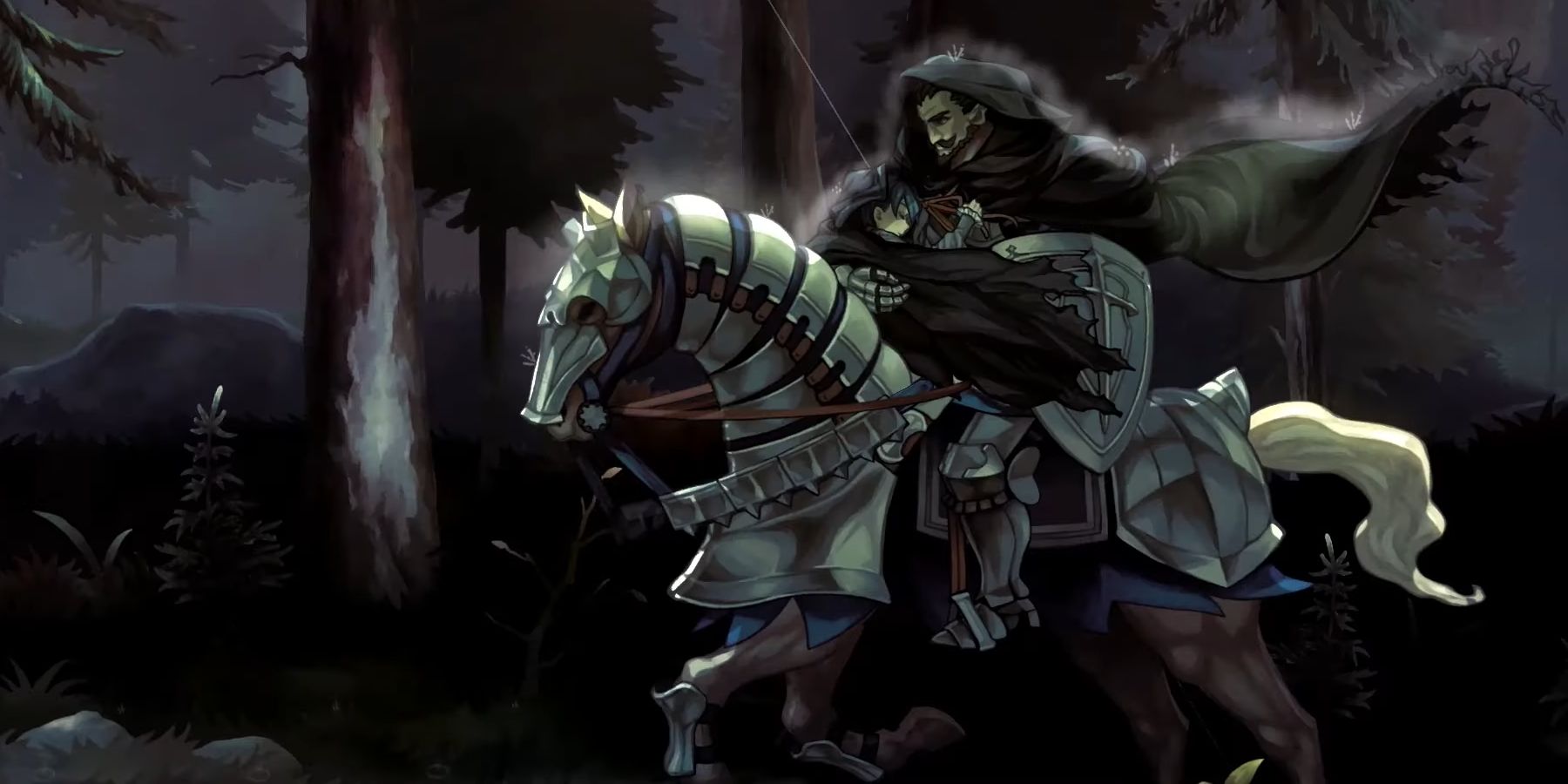
Unicorn Overlord: Meet the Characters
In Vanillaware's upcoming game, Unicorn Overlord, players will take control of Alain as he fights alongside a colorful cast of characters.
Unicorn Overlord’s Strategy Gameplay is Best in Class
The depth and complexity of Unicorn Overlord’s strategy system could take some fans by surprise. It is hands-down some of the best in the genre. Unicorn Overlord works in a Rock-Paper-Scissors style of gameplay where classes like Hunters are strong against flying classes like Gryphon Knights, making it so players always have to keep these weaknesses and strengths in check as they build their formations and designate which classes go in a unit. The game features a monstrous fifty playable class types, each with distinct strengths and weaknesses, along with a growing list of combat abilities that unlock as players level up and promote their classes. All of this is to say that there are a lot of things to consider when players are designing their armies, and that is the crux of Unicorn Overlord's deep strategic gameplay.
Oftentimes, a battle isn't forwardly about stats or who has the biggest sword. Some of the game's best moments come down to how well the player has used Unicorn Overlord’s systems against the enemies, making for many satisfactory “aha” moments where the player feels like they outsmarted the game. For example, in one battle, one of our under-leveled three-person units demolished a whole five-person unit in a single turn because we optimized the formation and class types against the enemy properly. A level ten unit can be viable against a level fifteen enemy if the player plans correctly. While levels and equipment play a significant role in the success of any battle, success starts in preparation, and Unicorn Overlord ensures that thinking outside the box is adequately rewarded.
Unicorn Overlord’s unit battles operate on an auto-battler system, meaning players won’t do much when combat kicks off except watch their units go to war once they encounter an enemy. While Unicorn Overlord is gorgeous and well-animated, past the opening hours, it felt like watching combat encounters didn't really add much because the game tells players what the outcome of the battle will be at the start. However, players still have a significant hand in how battles play out using the game’s condition system, which may be familiar to those acquainted with Final Fantasy 12’s gambit mechanics. It's a system that is easy to learn but hard to master, likely taking many players repeated trial-and-error bouts to figure out. Once everything clicks, though, it makes for an incredibly smart chaining system.
Unicorn Overlord’s condition mechanics make players select base actions like Slash or Heal and then trigger them depending on the "then-if" statements players designate--only growing in complexity the more a class unlocks abilities. Players can have something like a Thief that operates offensively, stealing action points from enemies and dealing damage in the process, or a Thief that is all about evasion and drawing attacks away from soldiers in the back, depending on what players want. Towards the mid to late portions of Unicorn Overlord, players will spend tons of time figuring out how to synergize each unit using the Condition system, which has almost limitless possibilities. Figuring out what works best and creating unlikely allies with new conditions is what makes toying with Unicorn Overlord's systems so interesting.
Once players are on the battlefield, Unicorn Overlord makes each stage and liberation mission a dynamic tabletop-like event with map gimmicks and dynamic stage changes. Depending on what kingdom Alain is in, there could be environmental challenges like dust storms that lower visibility or entire factions that decide to join the liberation army in the middle of combat. In other instances, one-off characters will even come in to assist out of nowhere and give the edge to Alain in case he is struggling. Rarely does the proposed formula of capturing a command post to win the stage play out as easily as it appears. Unicorn Overlord makes a commendable effort to keep players thinking on the fly while also refreshing its own gimmicks at every turn.
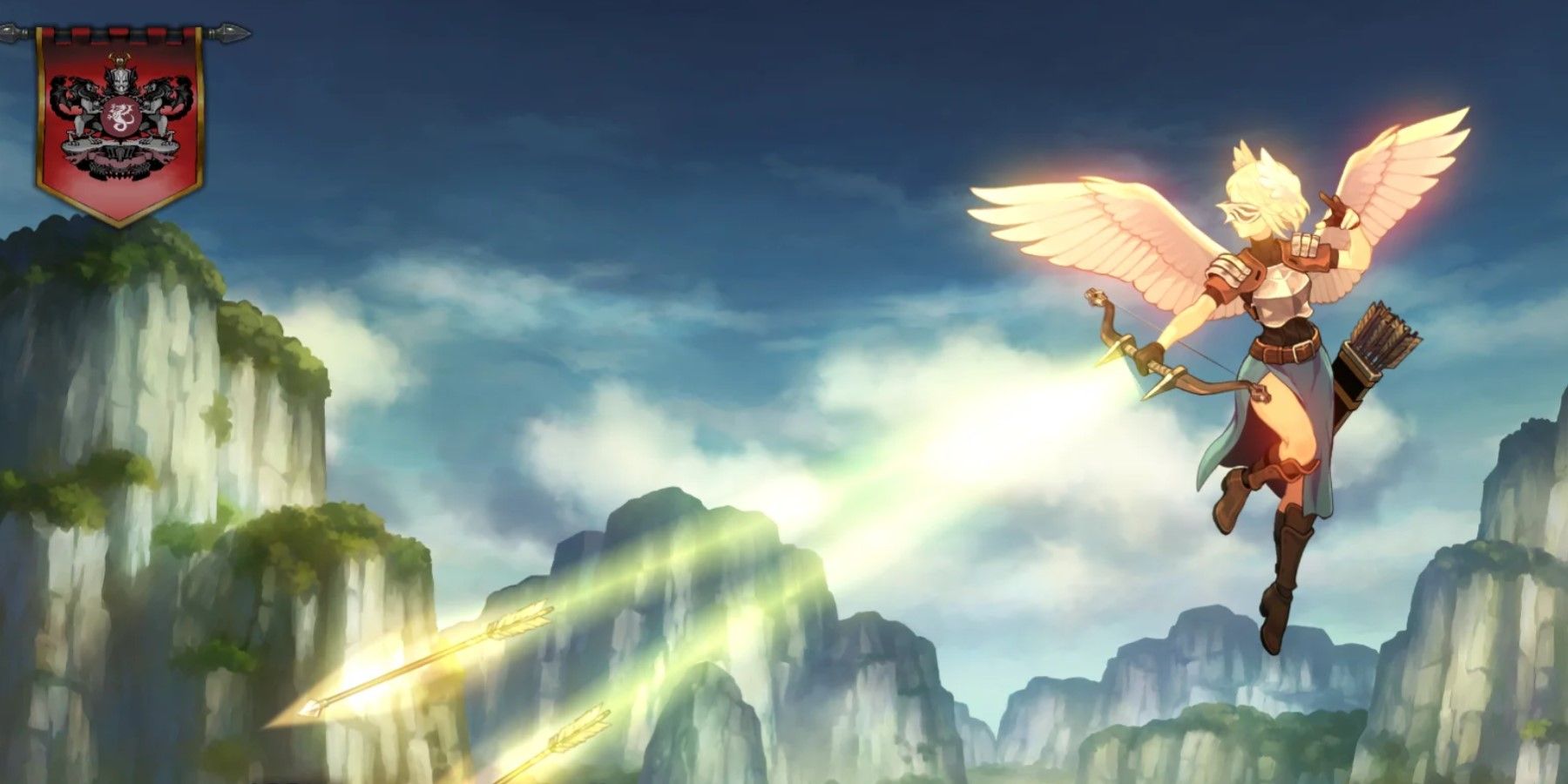
Unicorn Overlord Might Be Opening the Floodgates for Vanillaware
Unicorn Overlord's day one multi-console release may be a good sign for fans of Vanillaware, primarily known for single-platform releases.
Unicorn Overlord’s UI Can Be A Lot to Manage (and Micromanage)
This could all sound pretty daunting for newcomers, and in some ways, it can be. The game is punishing and intense for those who just want to blitz through the whole thing to see the next story moment. However, Unicorn Overlord helps new fans of the genre get a good understanding of the game and takes some of the legwork out of figuring everything out. Vanillaware did a great job at including an exhaustive list of gameplay tips and reference material to help players remember what all the gameplay systems and classes do. It's also extremely forgiving with its retries, allowing players to go back to the overworld at any time if they realize they're in over their heads.
The game also features an “Optimize” button that immediately equips the best armor available for any class and also puts up a basic set of conditions depending on what the class has unlocked and equipped thus far. These optimizations weren’t always adequate toward the back half of the game, but as a way to streamline some of the busywork in Unicorn Overlord while players are still getting a hold of class strengths and weaknesses, it’s as good as any system.
However, there are so many mechanics and moving parts in Unicorn Overlord that it can get overwhelming to keep track of at times. First and foremost, Unicorn Overlord’s plethora of menus can be cumbersome to navigate. As the campaign goes on and the rebel roster swells to hundreds, there comes a point where entering the character and item menus becomes an exercise in patience. With characters and items in the literal hundreds, players will have to dig through tons of items and characters to find whatever they’re looking for, and it's never a quick process. It doesn’t help that so much of the menu system also has tiny lettering and isn’t easily legible at a glance, making the whole process of finding a specific character or item a needle in a haystack situation.
Additionally, Unicorn Overlord’s expansive list of classes, some drastically different despite being visually similar, can eventually grow into a confusing juggling act of trying to remember who does what, and there aren't many UI considerations to help players keep track of it all. The game's big list of classes in the game tips menu is nice to have, but it becomes a nuisance to have to parse through so many menus to reference what a class does just to go back and make the proper adjustments. Having a visual indicator highlighting what each class is strong or weak against in the Unit Formation menu would have been an excellent quality-of-life addition before players break out the pen and paper to keep track of everything.
Despite the UI quirks, though, Unicorn Overlord is accommodating enough that many of the annoyances regarding UI are just that: annoyances. Battles are stop-and-go with plenty of breaks to let players fiddle with whatever they need to, and there is never a moment when digging through five separate menus led to anything other than a sigh that it was time to go back and read what a class does for the fifth time. Unicorn Overlord is smart and engrossing enough to overlook any existing issues with UI or its quality of life shortcomings--many of which will generally wither away as players adjust to the game.
Unicorn Overlord is a standout tactics RPG landing just when the genre is coming back to life. It's deep, creative, gorgeous, and incredibly addicting, with plenty to offer for those who want to dig into all its systems. The game may stumble a bit with its simple plot, tedious UI, and quantity over quality side character stories, but those feel like small issues in an overall impressive and well-rounded game. Great for newcomers and genre veterans alike, Unicorn Overlord is a can’t-miss title.
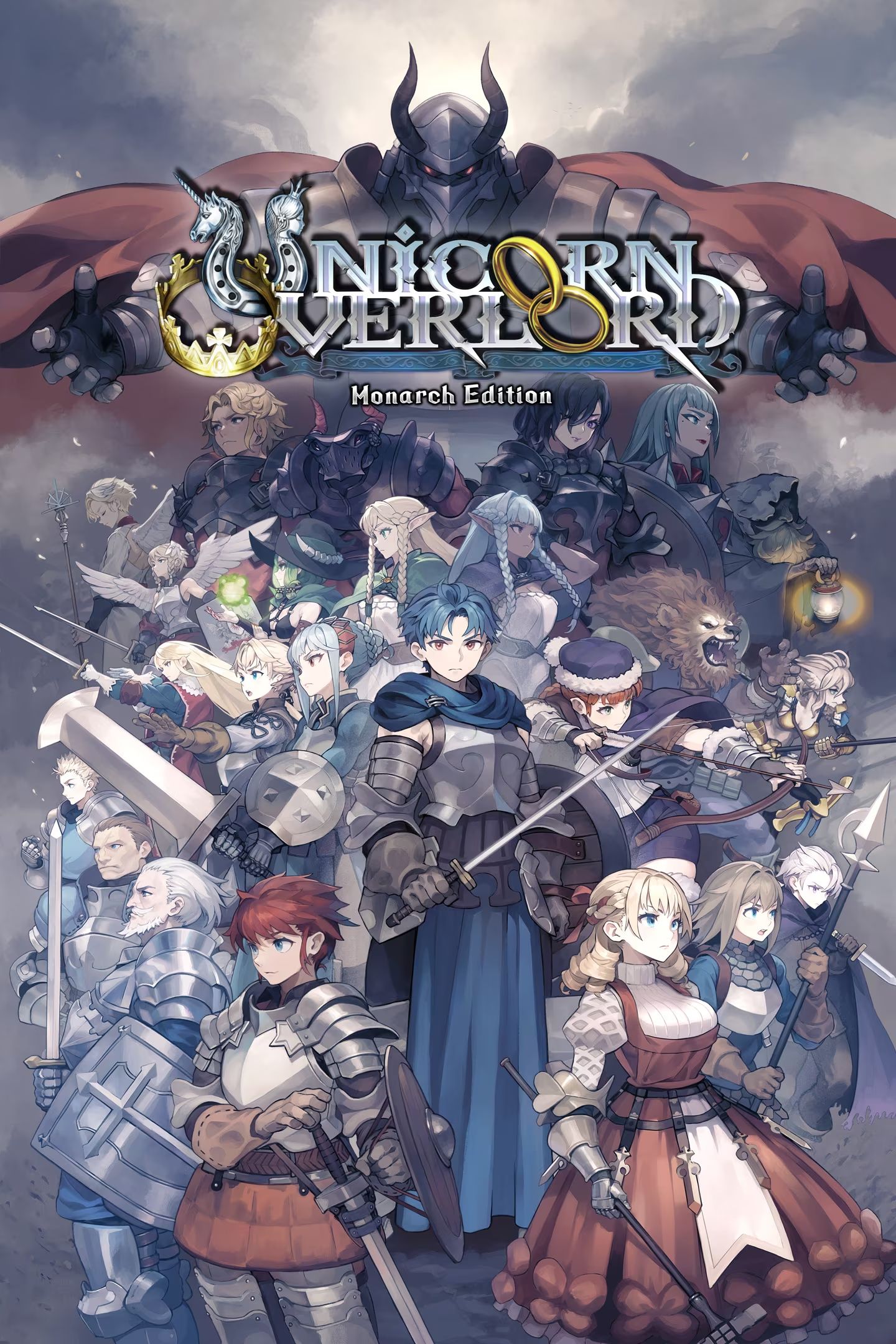
Unicorn Overlord
Reviewed on PS5
Vanillaware's Unicorn Overlord is a tactical RPG set in Fevrith, a continent consumed by war. The story follows Alain, an exiled prince who must put together an army capable of liberating his kingdom.
- Deep strategic gameplay that rewards experimentation
- Gorgeous artwork and visuals
- Great world-building with tons of unique characters
- Cumbersome UI
- Simple story with disjointed side plots
Unicorn Overlord is available now for PS4, PS5, Switch, and Xbox Series X|S. Game ZXC was provided a PS5 code for the purposes of this review.

